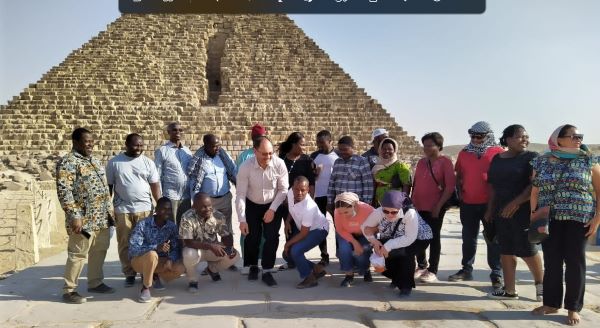Following the development of the Africa Water and Sanitation Sector Monitoring and Reporting System (WASSMO) web-based system for monitoring and reporting progress in the water and sanitation sector in Africa, AMCOW in collaboration with the government of Republic of Egypt organized a three-day capacity building workshop from May 10th - 18th 2022 which took place in Cairo, Egypt. The purpose of the training was to strengthen the capacity of member states on the monitoring and reporting framework of the WASSMO and AfricaSanNgor commitments as well as to help participants understand how to input data into the WASSMO online system. It served an opportunity to share the sector knowledge and deepen collaboration for effective data collection and reporting.
However, given that the AIP PIDA Scorecard indicator methodology, which Global Water Eastern Africa is implementing, is aligned to the WASSMO system, it is imperative that understand how the two tools complement and align with each other, to improve the relationship between WASSMO country teams and the AIP Scorecard implementing teams. It would go ahead to eliminate any duplications.

What is WASSMO?
The African Union Heads of State and Government Summit of July 2008, mandated the African Minister’s Council on Water (AMCOW) to annually report on progress made in the implementation of the African Union commitments expressed in the 2008 Sharm El-Sheikh Commitments on water and sanitation taking into account several international agreements, the Africa Water Vision 2025 and the Africa Agenda 2063, as well as Sustainable Development Goal 6 on clean water and sanitation
In response to this directive, AMCOW in collaboration with the African Union Commission, and with financial support from Africa Water Facility through the Africa Development Bank, developed a web-based reporting system, the Pan-African Water and Sanitation Sector Monitoring and Reporting System (WASSMO) in October 2015. WASSMO is the first ever continent-wide automated web-based system that exclusively captures data on water and sanitation across the 55 Member States of the African Union using harmonised progress indicators. The objective of WASSMO, is to support and strengthen the decision-making processes at national, sub regional and continental level in the water and sanitation sector in Africa.
How does it align to the AIP PIDA Scorecard?
The AIP-PIDA Water Investment Scorecard was adopted by the African Union Development Agency-NEPAD as part of the Programme for Infrastructure Development in Africa (PIDA) in February 2022. The Scorecard will help government leaders fill sector funding gaps, make informed policy decisions, improve accountability and – most critically – provide millions of people in Africa with urgently needed water and sanitation services. The AIP-Scorecard is a complementary tool to WASSMO, in five African countries (Tunisia, Benin, Cameroon, Zambia and Uganda). Considering that the AIP Scorecard tracks priority water-related investment indicators and will assist leaders in improving accountability, monitoring, and response to the water investment gaps, it is a useful tool that can support the WASSMO to achieve water security in East Africa and Africa at large. The Alignment with WASSMO lies in completing the Finance mobilisation theme, Investment Environment and Investment performance and sustainability.
Mr. Andrew Takawira, Senior Technical Advisor with GWP-African Coordination Unit, in his presentation of the AIP PIDA Scorecard, emphasized the need to strengthen platforms for information sharing to ensure Integration of IWRM into monitoring and development of response strategies, to fill the gaps and platforms for information sharing. “There is a need to have a system in place to capture respective country NGO’s contribution to the Water and Sanitation sector, so that comprehensive reports on Finances from NGO are made. That is why these two tools have been developed to simplify the reporting processes”, said Mr. Takawira.
The highlight of the training was when participants were awarded certificates

